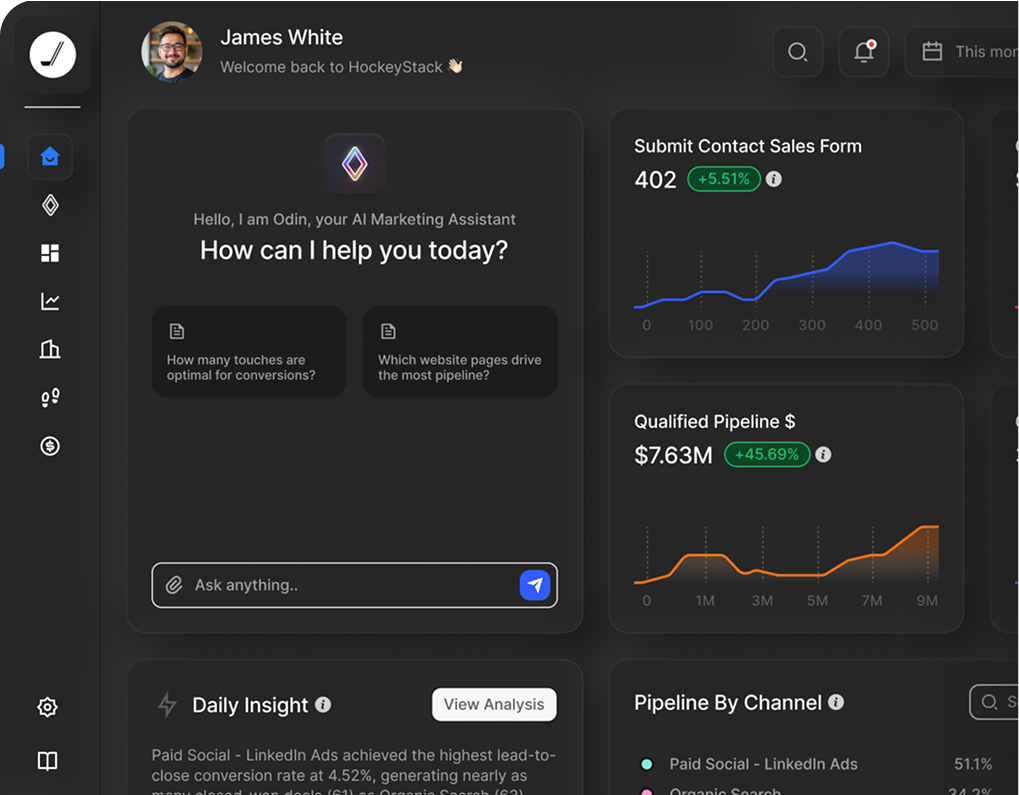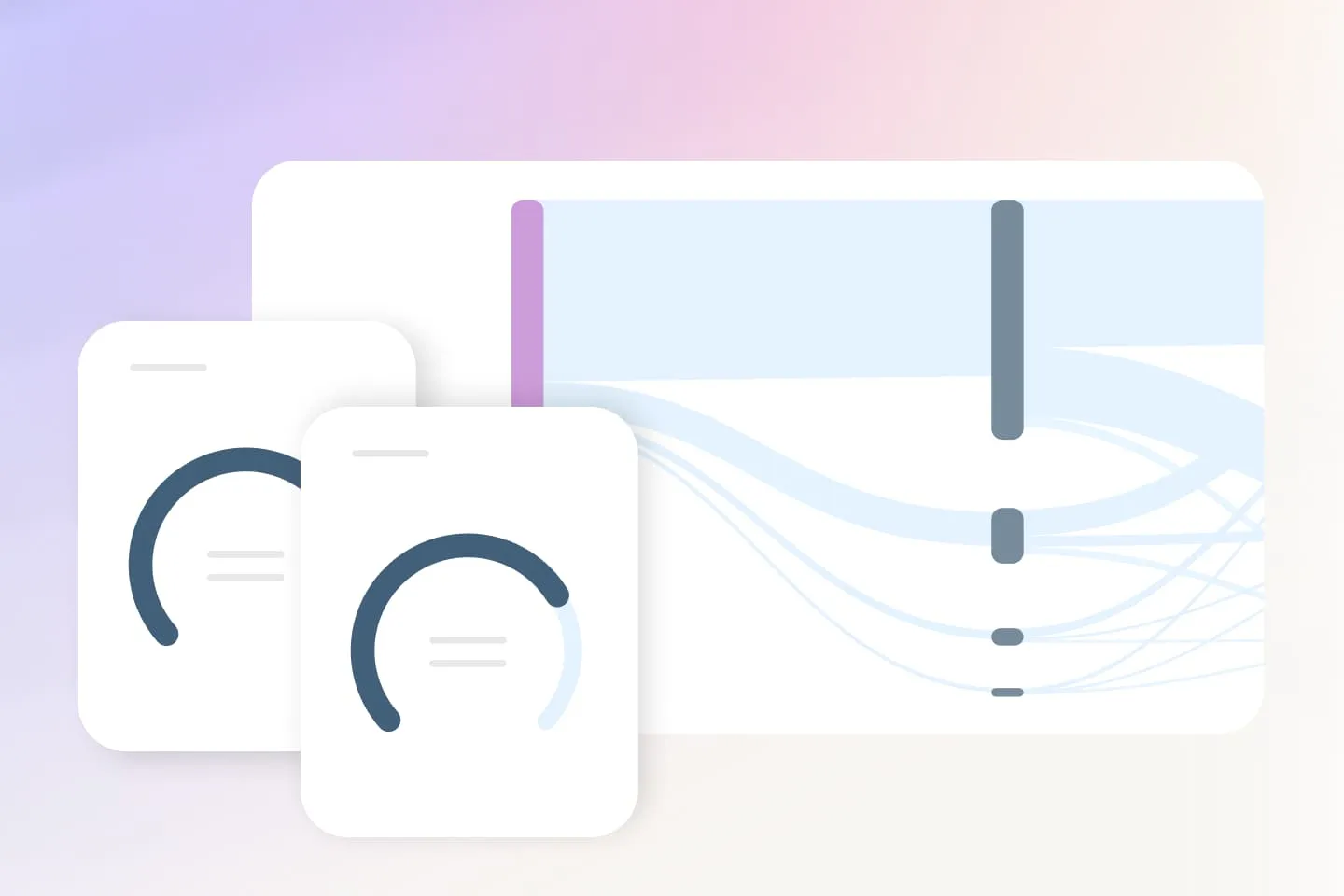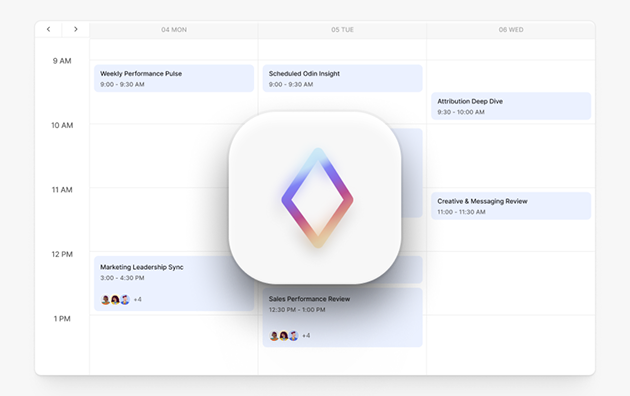B2B Dark Funnel: What Is It & How to Track It

B2B Dark Funnel: What Is It & How to Track It

Attribution reports show 80% of deals as "direct traffic" and sales closes deals that "came from nowhere."
If this sounds familiar, you’re probably stuck in the B2B dark funnel.
Let's examine what the dark funnel is, why it exists, and how modern tools can finally illuminate these hidden buying signals to recapture lost attribution and redirect budget where it actually drives revenue.
What Is the Dark Funnel in B2B?
The dark funnel represents buyer activities and intent signals that traditional web analytics, cookies, and CRM fields can't capture.
While the classic funnel measures every click and email open, the dark funnel operates in shadows, rendering first-touch and last-touch models largely meaningless.
The dark funnel spans every untracked influence channel and predates what most marketers label the "awareness" stage. Here's what actually happens in these invisible spaces:
- Private messaging on Slack, WhatsApp, or LinkedIn DMs where peers swap vendor stories (also known as “dark social”)
- Invite-only communities and forums where practitioners ask for tool recommendations
- Word-of-mouth referrals passed around at conferences or inside internal email threads
- Third-party research on G2, Capterra, TrustRadius, analyst sites, and niche blogs
- Passive content consumption like podcasts, YouTube demos, webinar replays that aren't logged by pixel or cookie
Critical evaluations and budget approvals often happen during these moments. By the time someone appears in your CRM, the "real" buyer journey is largely over. Understanding the dark funnel is the prerequisite for modern attribution, forecast accuracy, and meeting the revenue targets you're accountable for.
Why the Dark Funnel Exists Today
The dark funnel exists because buyers now self-serve research far earlier and longer than legacy funnels assume, packing decisions into places you can't tag or pixel. They lean on peers to validate options. The real influence shifts to private, tech-mediated spaces outside your marketing stack.
Longer buying committees stretch this anonymous window. One champion binges review sites, another lurks in a Slack community, and a CFO scans Reddit for cost-cutting tips. By the time consensus forms, their trail is already cold.
Shrinking trust in vendor messaging and rising privacy walls—GDPR, CCPA, cookie deprecation—cut off even more visibility.
How the Dark Funnel Impacts Revenue, Attribution, and GTM Alignment
The dark funnel distorts performance in five ways:
- It inflates "direct" conversions
- Causes marketers to misallocate ad spend
- Creates false positives in campaign reporting
- Makes it difficult to identify content that actually triggers deals
AI-powered account intelligence helps illuminate the funnel. For example, platforms like HockeyStack fingerprint anonymous visitors, stitch those signals to intent data, and let agents like Nova and Odin surface which stakeholders are researching pricing before they ever fill a form.
The benefits compound across marketing, revenue, and sales teams. When everyone works from the same intelligence, forecasting stabilizes, spend gravitates toward high-leverage programs, and reps prioritize accounts already heating up in channels you once considered invisible.
5 Signs Your Pipeline Is Stuck in the Dark Funnel
If revenue feels unpredictable while dashboards look okay it means you’re losing deals in places you can't see. These five warning signs will help you identify dark funnel activity:
1. Unexplained Spikes in "Direct Traffic" Conversions
Sudden spikes in direct traffic conversions usually signal dark funnel activity. For example, someone could have shared your link in private Slack channels, WhatsApp threads, or LinkedIn DMs, stripping off the UTM parameters that would show the real source. What looks like organic discovery is actually peer recommendations happening in conversations you can't track.
2. Opportunities Materializing Without Marketing Touchpoints
Accounts often complete their vendor evaluation through industry meetups, review sites, and private recommendations before any trackable marketing engagement. And because buying committees are doing their homework in spaces you don't monitor, it makes attribution reports useless for understanding what actually influences deals.
3. Attribution Reports Dominated by "Unknown" Sources
Dark funnel research can start months before a deal closes, but most attribution systems only look back 90 days. By the time the opportunity appears in your CRM, those early peer recommendations and review site visits have fallen outside your attribution windows. The result is attribution reports dominated by "Unknown" sources.
4. Intent Data Mismatches With ICP Accounts
When your best-fit customers consistently buy without triggering intent alerts, it’s a sign that their evaluation process happened in the dark funnel. This mismatch happens because their research occurred in private forums and peer conversations that intent platforms can't monitor.
5. Knowledgeable Buyers Without Trackable Engagement
Prospects who arrive at the first call and already know your competitive differentiators and recent case studies (while having barely touched your tracked assets) are another sign of hidden funnel activity. They likely consumed analyst reviews, peer-shared PDFs, or YouTube breakdowns.
What Do You Need to Track the B2B Dark Funnel?
Tracking the dark funnel requires multiple complementary data sources working together. Each approach fills gaps the others leave behind.
First-Party Behavioral Data
First-party behavioral data is engagement you can track directly: website visits, email opens, content downloads, and product usage. You collect this through your website analytics, marketing automation platform, and CRM rather than relying on third-party cookies.
But with browser cookies dying and ad blockers becoming commonplace, traditional tracking is becoming useless. The real insight comes from rolling individual visits up to account level, since B2B deals can involve six to ten stakeholders researching in parallel.
Watch for patterns that predict pipeline: repeated pricing page visits, deep scrolling through integration docs, and binge sessions on customer stories. These behaviors signal serious intent weeks before any form submission.
Third-Party Intent Data
Intent data reveals where prospects research you offsite: review comparisons, topic searches, and content downloads the moment they start evaluating solutions. Providers like Bombora and G2 Intent monitor thousands of sites for relevant topic surges.
HockeyStack’s intent data takes this further by blending intent scores from multiple sources and explaining why accounts score high or low. The platform measures which intent signals actually predict pipeline, creates targeted account lists using both first-party and third-party data, and sends real-time alerts when key accounts engage with your content. HockeyStack also provides lift reporting to show which campaigns and content actually move the needle on revenue.
Dark-Social and Community Listening
Tools like Brand24, Mention, or Sprout Social can help you track brand mentions across social platforms and forums. You can also set up Google Alerts for your company name plus terms like "vs," "alternative," or "review."
In addition, consider monitoring industry-specific Reddit communities, LinkedIn groups, and forums like IndieHackers or Product Hunt discussions.
AI-Powered Account Intelligence
Account intelligence combines first-party and third-party signals to identify patterns that correlate with your closed-won data. AI then learns which combinations of engagement patterns predict accounts likely to convert, even when you can't see their complete research journey.
Implementing this requires both advanced data collection and scoring capabilities. HockeyStack's enterprise platform uses cookieless fingerprinting technology to track anonymous visitors back to individual accounts, then applies AI to score accounts based on engagement signals and behavioral patterns.
The Nova assistant provides sales teams with automated account research and stakeholder mapping, while Odin gives marketing teams instant answers to complex revenue. The result is what Firstup describes as "full-funnel visibility, scoring we trust, and attribution that shows what's actually working. Sales and marketing are finally aligned, and we can make faster, more confident decisions."
Incrementality Testing
Incrementality testing measures whether campaigns actually cause conversions or just receive credit for conversions that would have happened anyway.
Run holdout tests by excluding segments of your target audience from specific campaigns, then compare conversion rates between exposed and unexposed groups. The difference shows true incremental impact rather than correlation.
Common Misconceptions About the Dark Funnel
The dark funnel gets painted as some mysterious black box that only Fortune-500 budgets can crack. But this isn’t true. Teams working with intent data and AI are proving that most assumptions about hidden buyer journeys no longer hold water.
"The Dark Funnel Is Completely Untrackable"
Modern intent platforms triangulate review-site activity, cookieless fingerprints, and account-level trends to surface a significant portion of previously invisible research signals, though exact quantification varies by provider and is not always publicly disclosed. Although you'll never eliminate the gap between anonymous research and identified pipeline, you can narrow it significantly.
"Only Enterprises With Huge Budgets Can See It"
Dark funnel visibility is accessible to companies with different marketing budgets. The technology has matured to where growing B2B companies can implement comprehensive buyer intelligence at similar scales to enterprises.
"Dark Funnel Just Means Private Social Sharing"
Private social is just one slice of a much bigger pie that includes review sites, offline events, and word-of-mouth that never appears in Google Analytics.
"Better UTM Tracking Will Solve It"
Adding more UTM parameters and improving tracking hygiene won't fix the dark funnel problem. The issue is that the most influential research happens in spaces where UTM parameters get stripped or don't exist at all. Private Slack messages, word-of-mouth recommendations, and review site browsing can't be tagged with campaign codes. You can have perfect UTM hygiene and still miss the peer conversations that actually drive buying decisions.
"It's Just A Marketing Problem"
The dark funnel also impacts sales, because they rely on the same hidden signals for account prioritization. RevOps also needs them for accurate forecasts.
"Traditional Analytics Will Eventually Catch Up"
Cookie deprecation and privacy controls are accelerating, not reversing. Legacy tools aren't adapting fast enough, and waiting simply widens your blind spot and distorts attribution models.
Understanding The Dark Funnel With Marketing Intelligence
You've seen how the dark funnel impacts attribution models and skews budget decisions.
HockeyStack's approach solves this through cookieless fingerprinting that tracks anonymous visitors from first impression to closed revenue, plus AI agents that surface next-best-action recommendations. Implementation can take as little as a week.
When you illuminate even a part of the hidden journey, the advantages compound and lead to cleaner attribution, smarter spend, and deals that move faster through pipeline because buyers hear from you the moment their private research signals real intent.
Content Repurposing
In this episode, Obaid breaks down how repurposing your substance is a more effective way to repurpose your content than repurposing an end-asset.


Ready to See HockeyStack in Action?
HockeyStack turns all of your online and offline GTM data into visual buyer journeys and dashboards, AI-powered recommendations, and the industry’s best-performing account and lead scoring.



